Powerful forces are changing our world. The pandemic’s impact is touching all countries, sectors, companies, the environment, and increasingly our homes. It is also morphing in some unexpected ways and combining to create even greater impacts than we expected.
Times of upheaval are always times of radical change. Some believe the pandemic is a once-in-a-generation chance to remake society and build a better future.
We all wonder how COVID-19 will change our lives and habits and homes, whether we will return to our ‘normal’ ways. Confined to our houses, we are also more aware of the space we share and the limitations of our homes. We want our domestic spaces to be more playful, safe, idle and pleasant, to keep the greatest number of family members entertained. Read more, ‘How Coronavirus Will Change Our Lives In The Next Decade.’
These types of pandemics, which evolve rapidly, create a lot of pessimism but there is always a silver lining and good to come out of awful times.
Taking into account the circumstances it seems reasonable to think that this period of confinement is going to change how we plan our domestic spaces, in beautiful ways, that will change our homes forever. History shows that national shocks —such as the Depression, World War II and the financial crisis—have a way of changing the way we live in lasting ways. This one is looking like no exception. New market research finds dramatic shifts in consumer values, and behaviour, as life gets turned on its head. Read more, ‘How Previous Epidemics Impacted Home Design.’
Goodbye rush hour and business suits. Hello multi-functional domestic spaces, home robots, and mood-boosters. When we come out of this pandemic, we must learn some lessons: of the crucial importance of nature to our wellbeing and to our very existence; of the power of localisation; and simply of a kinder way of being. After the suffering and the selflessness we are witnessing, we cannot allow ourselves to go back to how we were, or lived.
This is a moment in history.
Just three months after releasing its forecast of this year’s biggest global consumer trends, market researcher Euromonitor International on Monday updated its predictions to reflect a major impact from Covid-19. Some shifts have taken hold much faster than Euromonitor expected, notably the home’s transformation into a multifunctional refuge used for work, school, leisure and exercise.
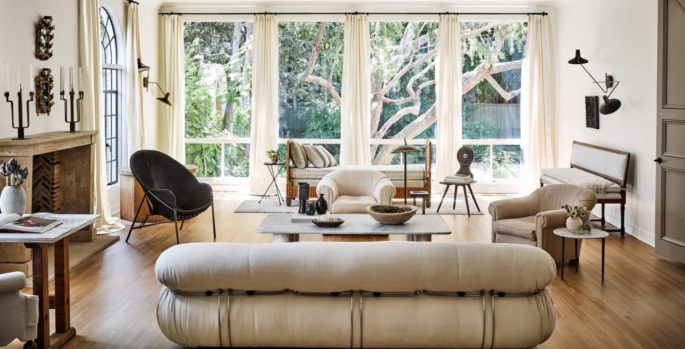
We want our domestic spaces to be more playful, safe, idle and pleasant, to keep the greatest number of family members entertained. Jeremiah Brent and Nate Berkus’ living room in LA. Image via architecturaldigest.com
Homes will have Versatile and Multi-Functional Spaces
As enforced isolation drives a mass exodus from public life, and daily life turns inward, the home encompasses entire worlds with living spaces quickly evolving to encapsulate everything from the boardroom to the office, yoga studio to the lecture hall. With out-of-home activities slowly dwindling—or completely cutoff in some places—the radius of daily life is constricting. As we’re forced to adapt, living spaces expanding to fit the needs of all different types of activities, becoming more versatile than ever. Read more, ‘How to Work From Home If You’ve Never Done It Before.’
The new emphasis will be on versatility, multi-functionality and transformation. Houses must be transformable – this crisis will accentuate the already existing tendency to design modular spaces. The home is being stretched into a space for learning. As schools around the world close their doors, virtual classrooms are popping up in their place. From the college student to the hobbyist, online learning platforms are proliferating. Kindergarten is now being held at the kitchen table as schools around the world shift to virtual learning, while enthusiasts can learn new skills from their couch thanks to online classes. Read more, ‘Design Tricks: You Might Have More House Than You Think.’
At-home empires and multi-functional spaces make more sense at a time when we do everything from home – from work to exercise.
We are likely to see the greatest emphasis on multi-functionality, however, in the inclusion of more spaces enabled for remote work, from independent rooms to rooms that are reconfigurable depending on the time of day. Recent years have seen a rise in digital nomads, for whom remote work is nothing out of the ordinary. Even so, the work from home model was traditionally labeled a luxury in many organisations. But now, corporate contingency plans are putting remote working structures to the test. Read more, ‘The Home Lockdown Guide: How To Prepare For Coronavirus Quarantine.’
With widespread shelter in place mandates or full-fledged lockdowns, working from home is the new norm for many. As people set up their new workspaces, it’s driving a spike in home office device and furniture sales. Monitors are flying off the shelves as 14% of people transitioning to home workspaces are buying new tech equipment, according to an online survey by CivicScience on March 16, 2020. Read more, ‘Melissa’s Ultimate Guide To Decorating.’
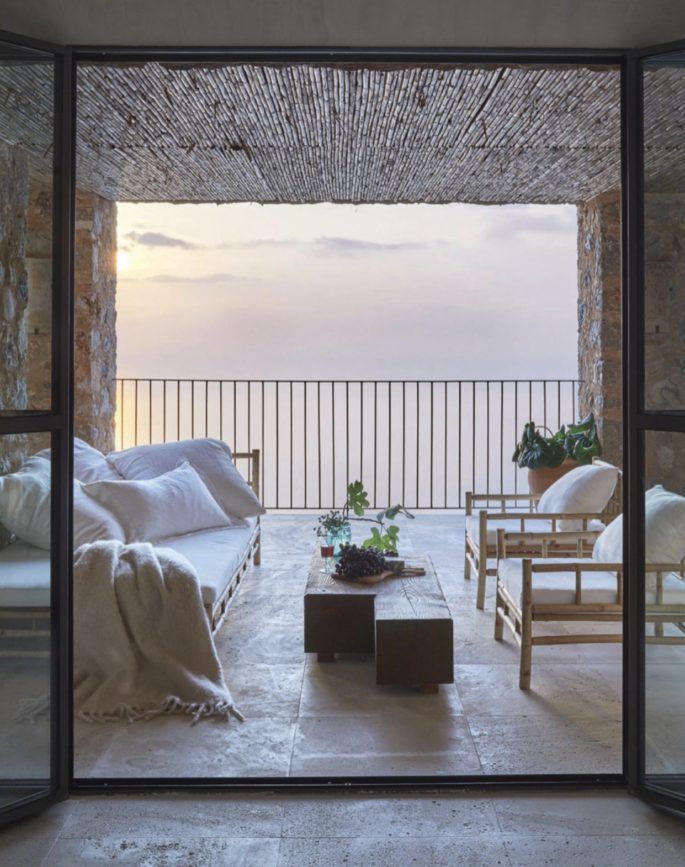
People will never again want to live in a home that does not have at least a small outdoor space. Image via Elle Decoration UK
At-Home Gyms
Now that going to the gym is no longer an option in many places, the home is evolving into a personal exercise studio. Fitness companies are helping consumers turn their homes into gyms with offerings that run the gamut of utilitarian to luxury with everything from exercise bikes, dumbells and yogamats. Studios are launching YouTube channels; instructors are taking to Instagram Live and Zoom to hold virtual classes; personal trainers are offering one-on-one sessions over FaceTime; and, in order to participate, inhabitants are getting creative with their space.
On the high end of the spectrum, a steady procession of smart workout mirrors has been hitting the market lately, including Mirror, Tonal and Tempo, touting virtual classes and one-on-one instruction. Tonal reports that sales tripled in the third week of March 2020, as gyms closed and shelter in place orders started going into effect. Meanwhile, trendy boutique studios like Barry’s Bootcamp, Y7 and Flywheel are pivoting to virtual content. Big brands are also beefing up their digital offerings. Nike’s Run Club app has made all of its premium virtual content, including guided workouts, free until June 9, and Adidas AG is posting daily virtual sessions on its Adidas Runners Instagram account.
Going Full-Circle
As concern for the environment grows, architects are exploring a more holistic approach to sustainability, building homes with the future firmly in mind. It calls for a circular approach that suggests that all things should be eco-friendly when they’re produced, while they are used, but also when they’re disposed of. It’s no good sourcing recycled materials if you use them in a way that means they can’t be recycled again.
Digital Possessions
As more of our lives are spent online, there is a growing focus on our digital worlds; from what our spaces look like, and even what we drive; to virtual tourism; to a new dimension of wellbeing practices for the digital self. In this new world of WFH (working from home), many are choosing to forgo the full work attire or makeup, but no one wants to do a video meeting with a messy kitchen filled with dirty dishes. You can virtually live in your dream home thanks to designer-approved Zoom backgrounds. All you have to do is change your Zoom background. The video-conferencing service allows users to upload their own backgrounds, which means you can virtually spend some time in your dream home or experiment with a whole new design style, with no strings attached.
Brands like West Elm launched a new set of digital interiors ready for
Zoom meetings in March 2020.
The home décor of your dreams is a few clicks away with luxury fittings and even your own virtual dog in one option. And this solution probably also means doing away with corridors – due to the terrible division of space within homes – to reallocate their space to these anterooms.
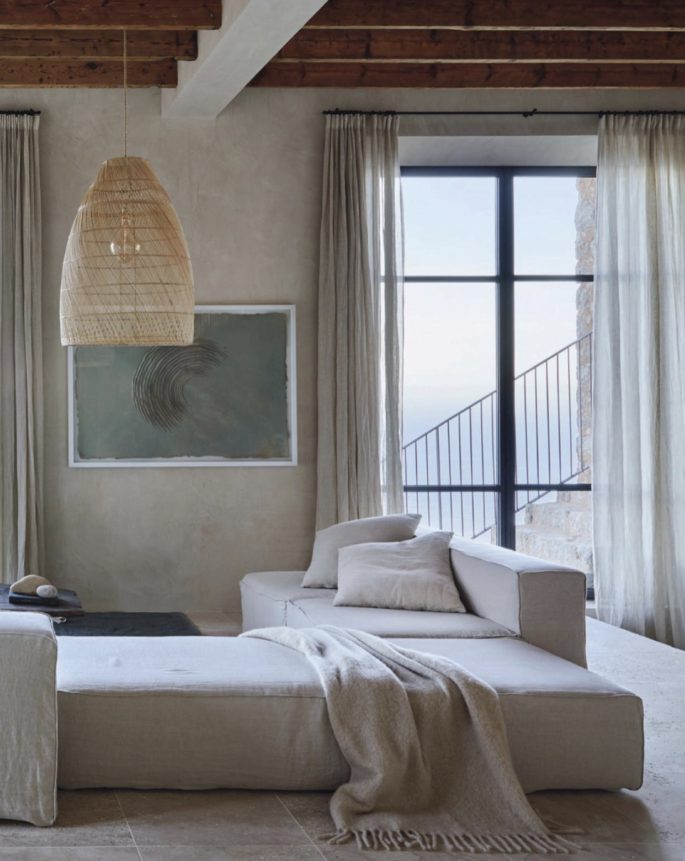
The multifunctional home is a prediction that came true “overnight.’Amid the coronavirus-fueled lockdowns, consumers fully retreated to their homes and immediately transitioned to working, learning, exercising and socialising there. Image via Elle Decoration UK.
We, Will, Make More Use of Roofs and Terraces, and Value Connections between Inside and Out
Interiors in homes will increasingly turn into exterior spaces. Nature is the one the thing that requires us to live well, but also idle well at home. With this in mind, terraces and rooftops will be planned to be continuous with adjoining areas, shaping indoor-outdoor living rooms as well as bedrooms with private patios. People will never again want to live in a house that does not have at least a small outdoor space. Roofs will become more important, and look set to become bastions of community freedom. In every apartment block, it will be important to set a minimum for the amount of green space available – which would not count towards the sale or rental price of the property or the profitability of the development. Read more, ‘How To Improve Your Outdoor Space.’
How Architecture Can Curb the Spread of the Virus
Cities are contagion hotspots and population density is a huge problem. With this in mind, there are a number of specific issues that can be addressed to stop the spread of viruses like this in the future. First, it is important to point out that, sooner rather than later, we will only open windows when we want to clean the outside of the glass. There are already mechanical ventilation systems that guarantee airflow 24 hours a day with very low levels of CO2, and that also eliminates harmful particles in the air, as well as viruses transmitted through water droplets. Read more, ‘How To Clean Your Home For Coronvirus.’
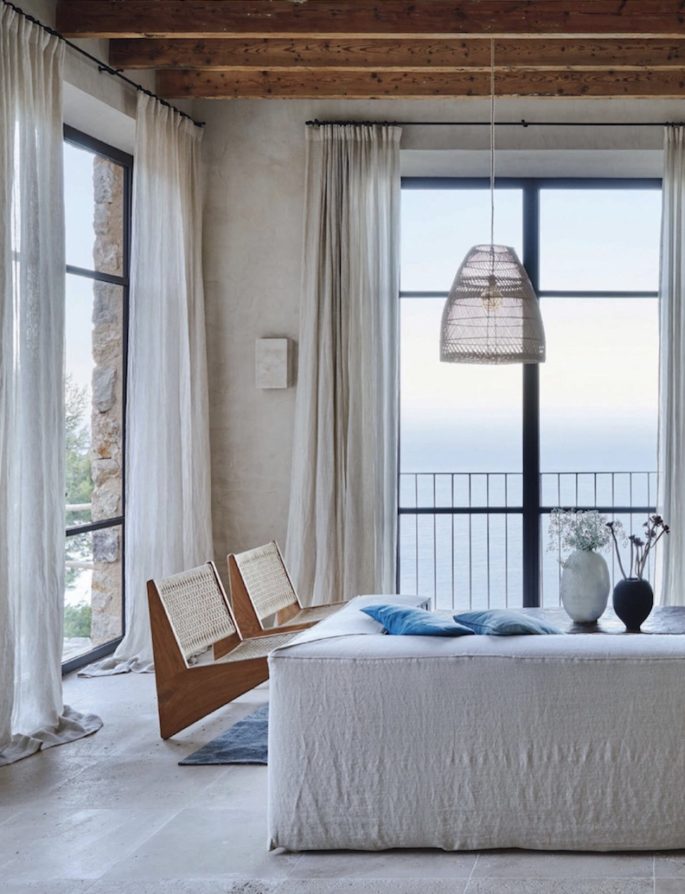
It is important to point out that, sooner rather than later, we will only open windows when we want to clean the outside of the glass. Image via Elle Decoration UK
Wellness, the Next Big Thing in Interior Design
We all hear a lot of advice about what to do to prevent the spread of the coronavirus. One common recommendation is to take your shoes off on the landing to avoid introducing the virus into the home. Thus the problem here is not [created] by viruses, but by our homes. Homes should be designed with a space just after the entrance from the street or landing, where you can take off your shoes as soon as you enter. Read more, ‘Luxury Homes That Promise To Reduce Stress.’
Materials are another factor that could help curb the spread of viruses.
It is important that surfaces are easy to clean and that in some spaces they even repel dirt. It is also important that architects work on creating details that have clean forms and are easy to maintain.
How to Future-Proof Your Home?
Finally, several designers we spoke to think common areas should also be rethought. Technology has a role to play in making such spaces safer and preventing the transfer of contagions through contact with surfaces. Doors with facial recognition and voice-controlled technology, for example, will reduce our use of buttons and manual controls.
This should be followed by another area for hanging coats and other outerwear (hats, scarves, umbrellas, etc). These spaces do not have to be large – they can be adapted to the size of the house. And this solution probably also means doing away with corridors – due to the terrible division of space within homes – to reallocate their space to these anterooms.
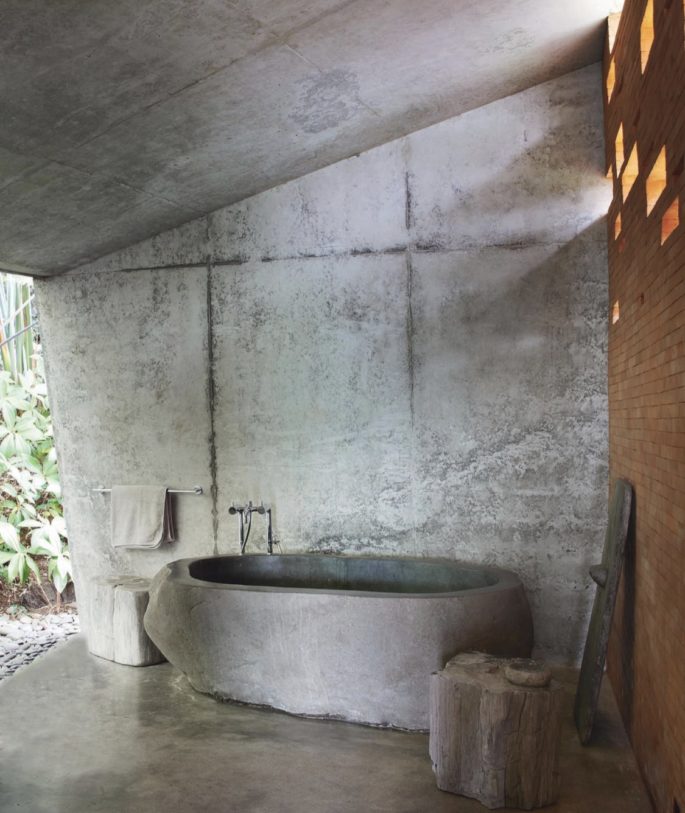
Being comfortable at home is essential now and, in this sense, the intervention of a professional who collaborates with you will help you plan new spaces, thinking about how you live, and what you need. Image via Elle Decoration UK.
We Need Homes That Make us Feel Good
Domestic spaces should be more playful, idle, and pleasant, to keep the greatest number of family members entertained. These types of unknown pandemics, which evolve rapidly, create a lot of pessimism. In any case, there is always a silver lining. This may be controversial, but this crisis is going to bring about many good things. For instance, the values of being together, of caring for your neighbours, of relating to others are being rediscovered; also the value of a good workspace, of relaxation, well-decorated and illuminated common spaces that reflect our tastes and emotions. Places that we are proud to live in – where we surround ourselves with the best we can afford. Places that feel like a sanctuary, as soon as you walk through the door making your spirits should lift. Read more, ‘How To Decorate For Happiness and Well-Being.’
Being comfortable at home is essential now and, in this sense, the intervention of a professional who collaborates with you will help you plan new spaces, thinking about how you live, and what you need. People are now working with emotional architecture (neuroarchitecture) or how the built space affects cognition. Read more, ‘Designing A Feel Good Home.’
The spaces that surrounds us condition us. A beautiful home boosts
your happiness and confidence.
Privacy Concerns Loosen
Euromonitor forecast in January that consumers would be less trusting of companies using their data without transparency, adequate security and opt-out options. But Covid-19 put those worries on hold, it says.
Right now, consumers are more focused on the virus, that’s their fear, according to Euromonitor. “They’re prepared to pause their privacy concerns and share data in the name of public health.” Even as lockdowns ease, Euromonitor expects privacy worries to remain on hold as online shopping and payments continue to be a necessity rather than a choice. Long term, consumers’ reluctance to give up personal data is likely to return, and companies are advised to be more transparent about their security measures.
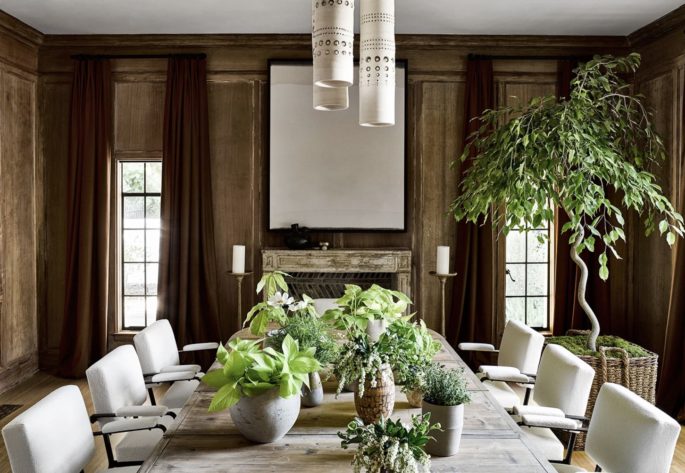
Inside Jeremiah Brent and Nate Berkus’ House in LA. Image via architecturaldigest.com
Friendly To Robots
Consumers have suddenly become far more comfortable with robots and other types of artificial intelligence performing jobs traditionally done by humans. Euromonitor earlier this year noted that consumers were buying more AI-enabled home appliances and virtual assistants, like Amazon.com Inc.’s Alexa. But now, such devices have a new draw, says Ms. Angus. “Voice-control technology limits the need to touch surfaces so much, so that’s why they are appealing,” she says.
Robotic innovation is further driven by businesses investing in technologies that offer no-contact services and deliveries. “This pandemic could well propel robots into the mainstream, moving them from novelty to essential,” says Ms. Angus. “In fact, it could be a situation where tech actually has to catch up.”
Heightened Distraction
Shorter attention spans mean that people expect information to be as accessible as possible in the quickest possible time. Earlier this year, Euromonitor cited this as the “catch me in seconds” trend and called for businesses to offer more personalised content in easily digestible messages.
The pandemic has deepened consumers’ distraction because they are overwhelmed by fast-changing information, and the lines between work, rest, play and exercise have blurred at home.
Another result is that consumers crave a new message from companies. “They expect them to be concentrating on public health and supporting the war against the virus, not so much on selling their products,” Ms. Angus says.
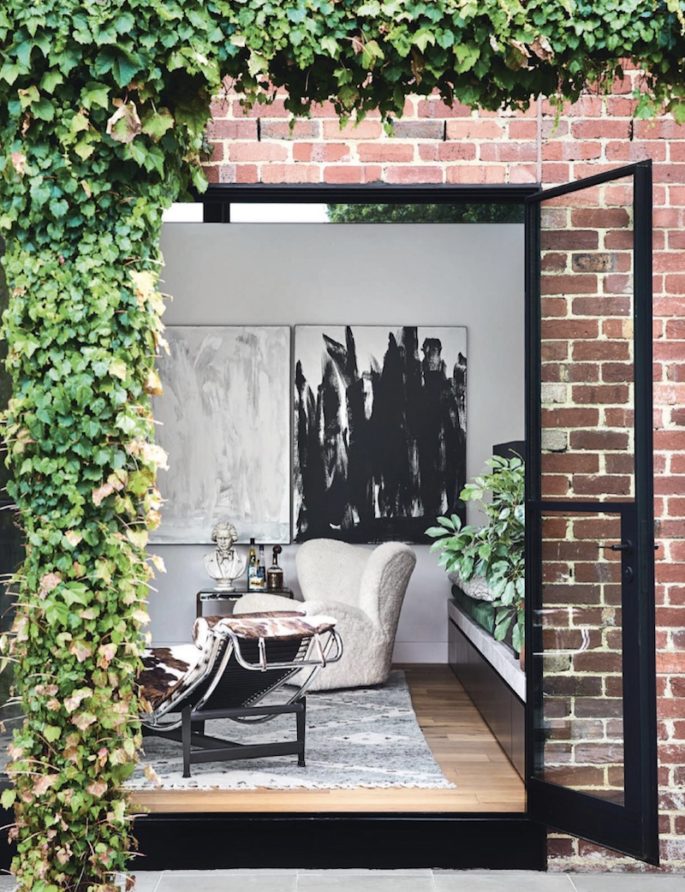
Interiors in homes will increasingly turn into exterior spaces such as this Melbourne residence by Studio Tate that features a stunning Cadry’s rug, www.cadrys.com.au
Slower Mobility
The coronavirus has “all but stalled” demand for better transportation options. We expect to see consumers slowly resurface, but they’ll be cautious. Many will continue to work from home or working more flexible hours.
Flexible working means maybe ‘rush hour’ is a term of the past.
More Inclusivity
Demand for products and services that emphasize “inclusivity for all,” including people with physical and mental disabilities, is a trend that has been strengthened by the novel coronavirus, Euromonitor says. As more travel destinations, education courses, entertainment venues, business meetings and cultural institutions emphasise their online accessibility, disabled communities benefit. And a rising sense of community is fuelled when more people are helping those in need, putting pressure on businesses to include disabled communities. As we come out of lockdown, most of us will have experienced firsthand the isolation many individuals with disabilities cope with daily. This is increasing our community spirit everywhere.
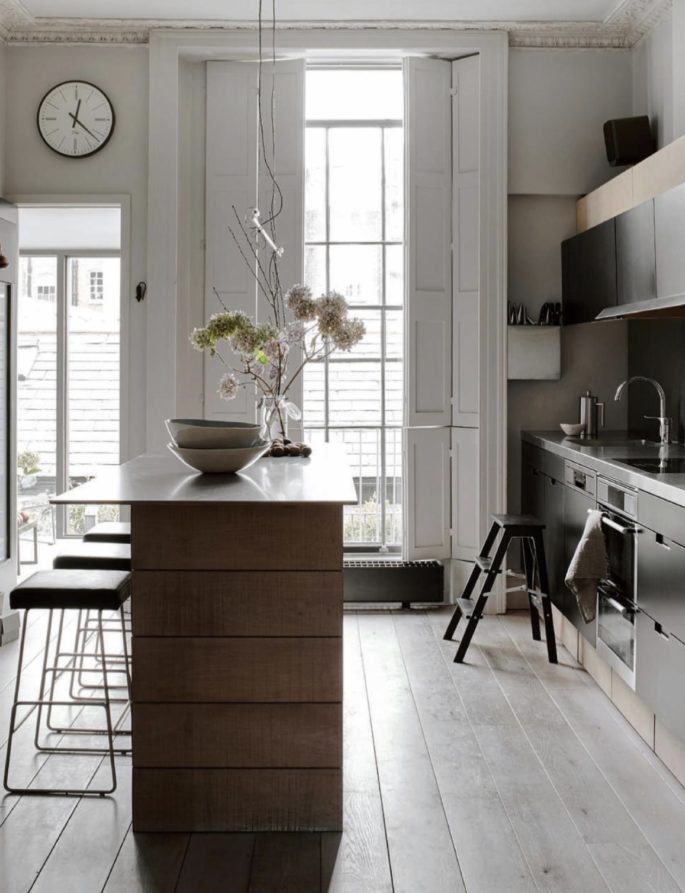
This crisis is going to bring about many good things. For instance, the value of a good workspace, of relaxation, well-decorated and illuminated common spaces that reflect our tastes and emotions. Image via Elle Decoration UK.
Homebodies
The multifunctional home is a prediction that came true “overnight.’Amid the coronavirus-fueled lockdowns, consumers fully retreated to their homes and immediately transitioned to working, learning, exercising and socialising there.
Casual dressing will become the norm and virtual socialising will continue even when physical gatherings resume, market researchers predict. “Already expected to be dramatic and far-reaching, the transition to the home as a hub has now happened and it’s here to stay,” Ms. Angus says. “For sure, as consumers resurface they will have changed some of their at-home habits.”
The Power Of Localisation
The pandemic has fuelled consumer demand for more local brands and products. Overnight, international travel and supply chains closed. Meanwhile, the virus has created a feeling of “getting through this together” and wanting to support local businesses and communities to keep them going.
Even after the lockdowns, consumers will continue to buy locally produced goods because of safety concerns. The products haven’t travelled far or been through too many people’s hands.
Fewer Reusables
This is another trend that coronavirus for now has halted. Euromonitor initially predicted more circular business models that aimed to promote sharing, reusing, refilling and renting to avoid waste. But now, concerns over health and touching products that have previously been used have led consumers to again embrace disposable products. “Clean comes before green.” Recovery of this trend will take time, but it will come back, Euromonitor predicts, adding that sustainability still ranks high on consumers’ agendas. Companies will need to educate consumers about the safety of reusable products and clearly instruct them on how to clean them.
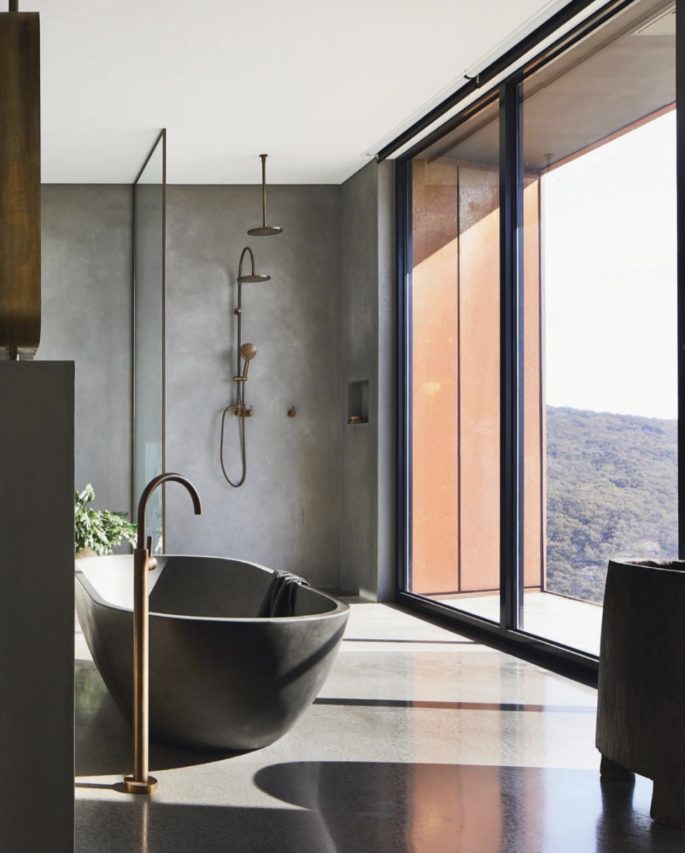
Concerns about indoor pollution and its impact on respiratory health are also on the rise. Image via Elle Decoration UK
Clean-Air Activism
Concerns over air quality were already high on the list of consumer concerns at the beginning of 2020, influencing travel plans and prompting shoppers to make purchases from brands promising to help the clean-air effort.
Now, limited activity and travel have dramatically reduced pollution.
As lockdowns loosen and people return to work, awareness of reduced pollution levels will make people more focused on sustainable living, Euromonitor says. Concerns about indoor pollution and its impact on respiratory health are also on the rise. Consumers will continue to seek protection against pollution and expect businesses to support initiatives and provide solutions.
What To Watch For
It is suspected coronavirus will lead to massive growth within the online grocery sector along with an increased demand for household cleaning products that may be here to stay. “I think we will be able to look back and see this as a point of inflection for online grocery shopping,” Alan Jope, Unilever’s chief executive told The Guardian.
The coronavirus pandemic will trigger lasting changes in shopping behaviour, according to one of the world’s biggest manufacturers of grocery brands.
Unilever’s chief executive, Alan Jope, said the health crisis would accelerate the growth of online food shopping. He also predicted a permanent increase in demand for soap and other cleaning supplies as improved hygiene became a priority for households. In the coming months, people would want to wash their hands more and be concerned about surface hygiene in homes, Jope added. “The whole hygiene thing will carry on.” Unilever, which owns more than 400 brands, was updating investors after a torrid three months in which the business experienced seesawing levels of demand. While shoppers filled kitchen cupboards with jars of mayonnaise, noodles and surface spray, the lockdown forced consumers to cut back on products such as ice-cream, which are reliant on sales to the cafe and restaurant trade.
The shift to home working had also sapped demand for grooming products such as shampoo and deodorant, with Jope conceding that people “shaving a bit less” was hitting demand for razors. It is expected changes in consumer behaviour to persist after lockdowns end. People will likely continue to spend more time at home, more time cooking, which is good for us, and maybe less personal care occasions. This whole nesting idea will continue.


